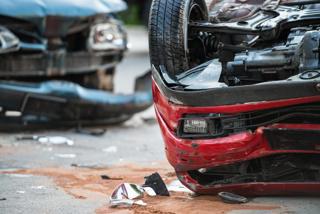Fatalities have fallen 33 per cent in the 16-19 year old bracket, 25 per cent for drivers in their 70s, and 22 per cent for drivers aged 80 and over since 2008.
Neil Greig, IAM director of policy and research, said: “While these reductions are really positive, we must continue to support these drivers, who are among the most vulnerable on our roads. The fatality rate continues to be highest for 16-19-year olds, followed by the over 80s, but for very different reasons.”
“The greatest risk to the oldest age group on the road is as a pedestrian. In comparison, younger people are much more at risk as a driver or as a passenger in a car driven by a young driver. Pedestrian risk increases from two per cent of those injured aged between 20 and 50, to around nine per cent aged 80 and over. The greatest risk to pedestrians is car drivers under 30 who are involved in more than a third of pedestrian fatalities.”
During their teens and twenties, the risk of young drivers being killed halves every five years as they gain more driving experience. Mr Greig continued: “This lends weight to the IAM’s call for post-test training to be made compulsory in a form similar to that of the system in countries like Austria*1, where reductions of up to 30 per cent in young male driver fatalities have been achieved. If new drivers can be kept alive during this most dangerous stage of their driving career, the risk of them becoming another killed or seriously injured statistic reduces significantly.”
Despite widespread beliefs to the contrary, older drivers are no more likely to be involved in an injury crash than middle aged drivers, and are much less at risk than drivers aged under 30. However, the risk of being killed as a car occupant increases from about 0.6 per cent of those injured aged between 30 and 50, to over three per cent aged 80 and over. This is generally a result of age-related frailty; older people are more likely to be injured in a crash and are less likely to recover. Between 20 and 50 years of age, the rate of deaths declines for all road users except for motorcyclists which remains almost constant over this period.
“Young male drivers continue to be the most high-risk group, and are more than twice as likely to be involved in a fatal or serious injury crash as young female drivers. A renewed focus on young drivers, which provides them with opportunities to gain further experience in a controlled and safe environment is of utmost importance”, said Greig.
Reduction in fatalities seen within two most vulnerable age groups
- By Fleet News
- |
- 7 January 2011
- News





















Login to comment
Comments
No comments have been made yet.